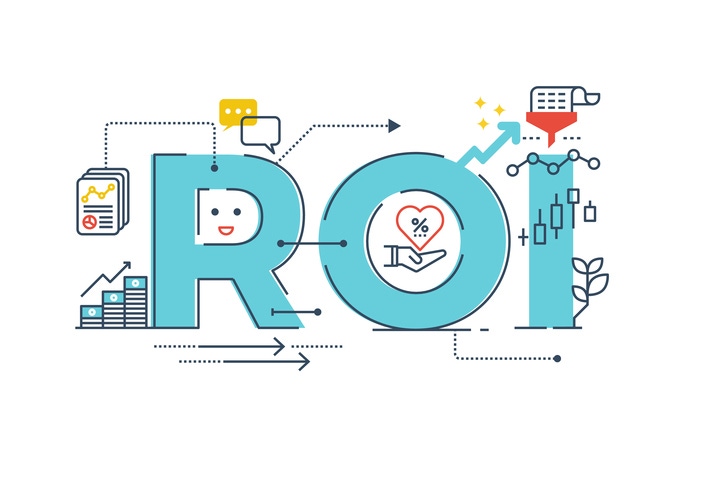Look to the future in determining tech needs and upgrades that keep clients in growth position.
October 24, 2019

By Tiffany Bloomer

Tiffany Bloomer
It’s that time of year again, time to prepare for next year’s IT budget and IT employee staffing. There’s just no getting around it, so why not make the best of it and jump on board?
As managed service providers, many times the task of establishing budgets is relegated to us as our customers look for expert advice on how to best spend critical budget dollars. And, the overriding theme these days seems to be return on investment. The question is, how do we develop and present IT budgets and plans that deliver ROI for our customers that also make sense for immediate needs and for the long run?
Establish a Budget
Let’s start with the spend. According to the Spiceworks 2019 State of IT annual report on IT budgets and tech trends, 89% of companies expected their IT budgets to grow or stay steady in 2019. Across all company sizes, organizations that expected IT budget increases anticipated a 20% increase on average, up from 19% in 2018. Additionally, small businesses are making significant increases to their hardware budgets while large enterprises are increasing their cloud budgets.
The bottom line: Make sure your customers’ budgets for technology enable them to at least keep up with the industry standards. By going too conservative on an IT budget, customers may quickly fall behind in their technology and infrastructure. This isn’t somewhere you want to skimp, since their IT infrastructure is the platform for their entire business.
Recommendation: Upgrade Hardware
Where can we find the most ROI for our customers? As the Spiceworks report indicates, I think it’s time to get back to our hardware roots, especially where small businesses are concerned. So many companies seem to sit on their servers and other hardware for many, many years before they do the needed upgrades. What they don’t realize is that not upgrading sooner is actually costing them money because they can’t upgrade other components due to the older server, nor can they add new features to software and other systems running on the server.
As Windows support starts to roll off for some of the older operating systems, some businesses will be caught off-guard, which is yet another reason to take a hard look at new hardware in 2020. For example, Windows 7 is going away at the end of this year, a move that affects a huge user base that will no longer be receiving updates, patches and proactive support for protection from security threats. History shows that hackers look for opportunities such as retired platforms to expose networks, place ransomware or instigate other security attacks. It essentially becomes “open season” on affected businesses. Your client might be saying, “I don’t have the budget,” but the costs skyrocket if a company is caught with some sort of ransomware that Microsoft is no longer protecting it from with security updates.
While upgrading hardware can be cost-heavy on the front end, it’s a critical component to the entire IT network infrastructure. Spending budget dollars to upgrade is far better than dealing with the headaches caused by downtime because of an old server or other outdated piece of hardware.
Newer hardware and servers offer numerous benefits, including scalability. For instance, Windows Server 2019 came out this year, offering greater flexibility to utilize programs such as Office 365 and in the way devices are managed. In the world of “bring your own devices,” servers like this help companies secure their information. Using Windows 10 and Windows Server 2019 helps companies manage their assets and allows people to bring their own devices to the system without exposing servers to security threats. Integrations are also easier with newer servers, as some versions of new operating systems cannot be accessed if running on an older server.
On a side note, another positive aspect to Windows 10 is the perpetual licensing. Microsoft is now promoting that once the operating system is purchased, customers are …
… automatically upgraded as part of the licensing model. Windows 7 and its predecessors didn’t have that capability. These automatic upgrades should also happen in the new Windows server environments, which is yet another reason to upgrade hardware now.
Let’s recap the benefits of updating your hardware:
Improved performance, speed and efficiency. With newer hardware, you reduce problems and unforeseen downtime — and remember, every minute an IT issue isn’t resolved is costing you money. A study by IDC found that nearly 80% of small businesses experienced downtime, with the cost ranging from $137 to $427 per minute. An outdated IT infrastructure burdened with performance issues can result in diminished worker productivity, poor customer service, lost business and a negative impact to your bottom line, while new systems will deliver improved performance and keep both customers and employees happy. Making the necessary upgrades to critical hardware infrastructure can also help you avoid many unforeseen security risks. Not to mention, some of the newer software versions also need more computing power than their predecessors, requiring users to upgrade hardware prior to installation. Your IT infrastructure is at the core of your business, and if you’re trying to run on an outdated platform, you’re asking for problems.
Security and peace of mind: New hardware not only improves the performance of your IT platform; it also ensures you receive any relevant updates from the hardware manufacturers and provides a current platform for new and updated software applications. Hardware and software alike often have vulnerabilities which vendors patch on a regular basis. As mentioned above, when support for older versions of applications comes to an end, these security patches are no longer provided, which can put your system at risk. The same can happen for hardware, so if you’re running on an unsupported and outdated IT platform, you will not be receiving critical security updates and patches. With so many data breaches in the headlines every day, as well as ransomware attacks and other threats, why put your business at risk?
Smart investments save money in the long run: Consider updating hardware when evaluating your customer’s IT infrastructure for 2020. Keep in mind that old hardware can be very expensive to maintain and typically is out of warranty, leaving the expense of repair on your IT budget roster. Thus, you might not be saving your customers the money you think you are by failing to replace older equipment.
With newer, better hardware, you’ll see improved performance, have access to powerful new tools and see workplace efficiency skyrocket. Further, by reducing your energy footprint with energy-saving technology, you can positively impact your customer’s bottom line while also doing something environmentally friendly. Upgrading will also enable access to new capabilities like remote management. Overall, they’ll see huge benefits in their business environment.
Tiffany Bloomer is president of Aventis Systems, a premier IT solutions provider to small and medium-sized businesses. Prior to Aventis Systems, she worked at Epana Networks, Viscom International and Fusion Marketing. She earned her master’s degree in international business and marketing at Georgia State University. Follow her on Twitter @AventisSystems or on LinkedIn.
You May Also Like
